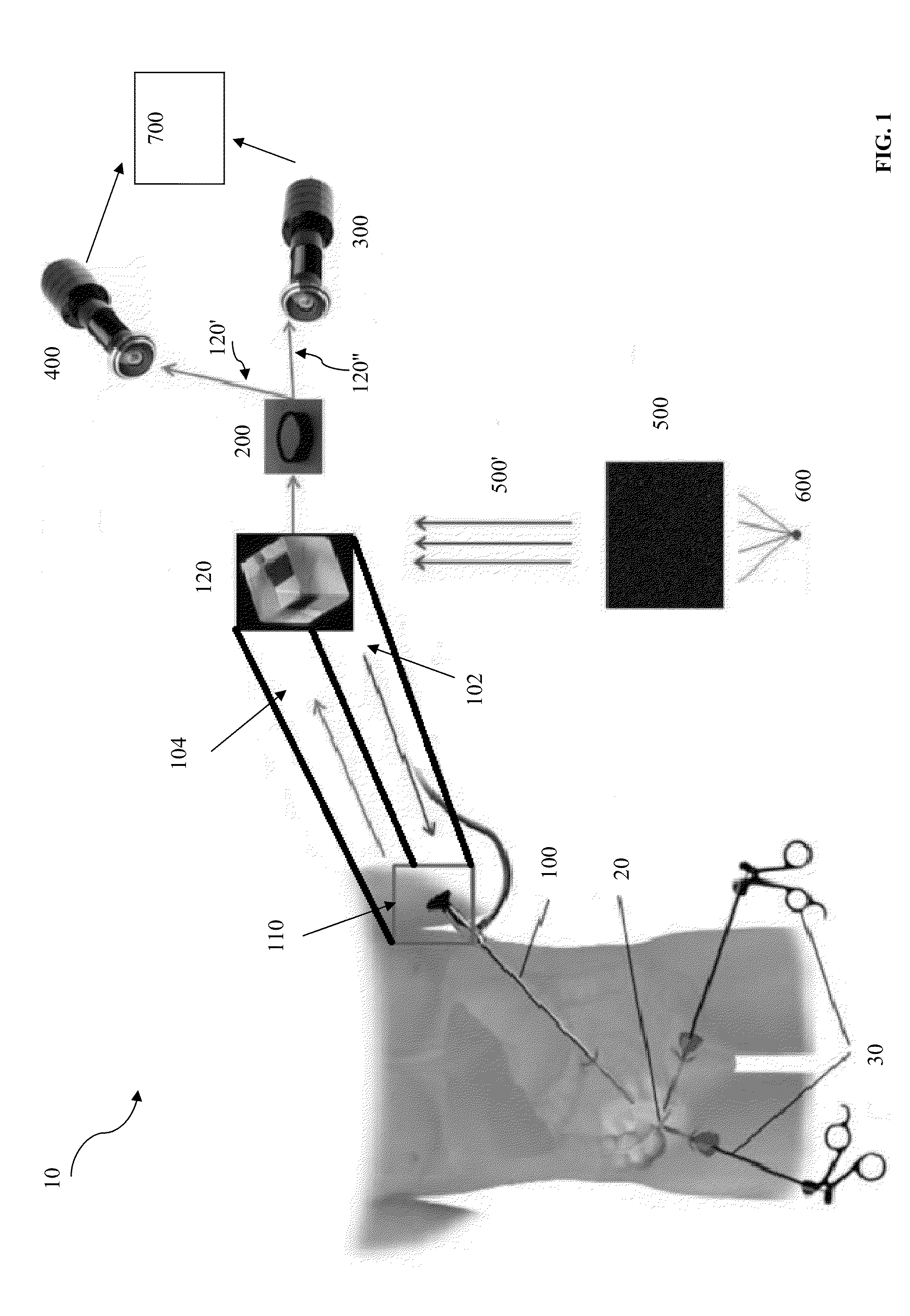Surgical structured light system
a structured light and surgical technology, applied in the field of 3d imaging improvement, can solve the problems of difficult surgery, no method to computationally provide this information for measurement and automation, and surgeons are left without depth perception, so as to improve navigation and safety, the effect of easy learning
- Summary
- Abstract
- Description
- Claims
- Application Information
AI Technical Summary
Benefits of technology
Problems solved by technology
Method used
Image
Examples
Embodiment Construction
[0040]Structured light projects a known pattern of light into a scene and measures this pattern with a camera. By knowing the structure of the pattern of light received by the camera, it is possible to compute 3D information. However, implementing this in-vivo during laparoscopy is difficult. The appearance of the surgical site must be maintained while implementing a Surgical Structured Light (SSL) system. Projecting a pattern of visible light onto the surgical site during laparoscopy, which is allowed to be perceived by the surgeon, could undesirably alter the surgeon's interpretation of the image and confuse or distract the surgeon. By analyzing how the light pattern is distorted by the 3D environment, structure can be accurately deduced in real-time using computational techniques.
[0041]The present subject matter provides for a functional SSL for use during laparoscopy, that maintains the view of the surgical site without distractions. In one exemplary embodiment, and in order to ...
PUM
 Login to View More
Login to View More Abstract
Description
Claims
Application Information
 Login to View More
Login to View More - R&D
- Intellectual Property
- Life Sciences
- Materials
- Tech Scout
- Unparalleled Data Quality
- Higher Quality Content
- 60% Fewer Hallucinations
Browse by: Latest US Patents, China's latest patents, Technical Efficacy Thesaurus, Application Domain, Technology Topic, Popular Technical Reports.
© 2025 PatSnap. All rights reserved.Legal|Privacy policy|Modern Slavery Act Transparency Statement|Sitemap|About US| Contact US: help@patsnap.com



